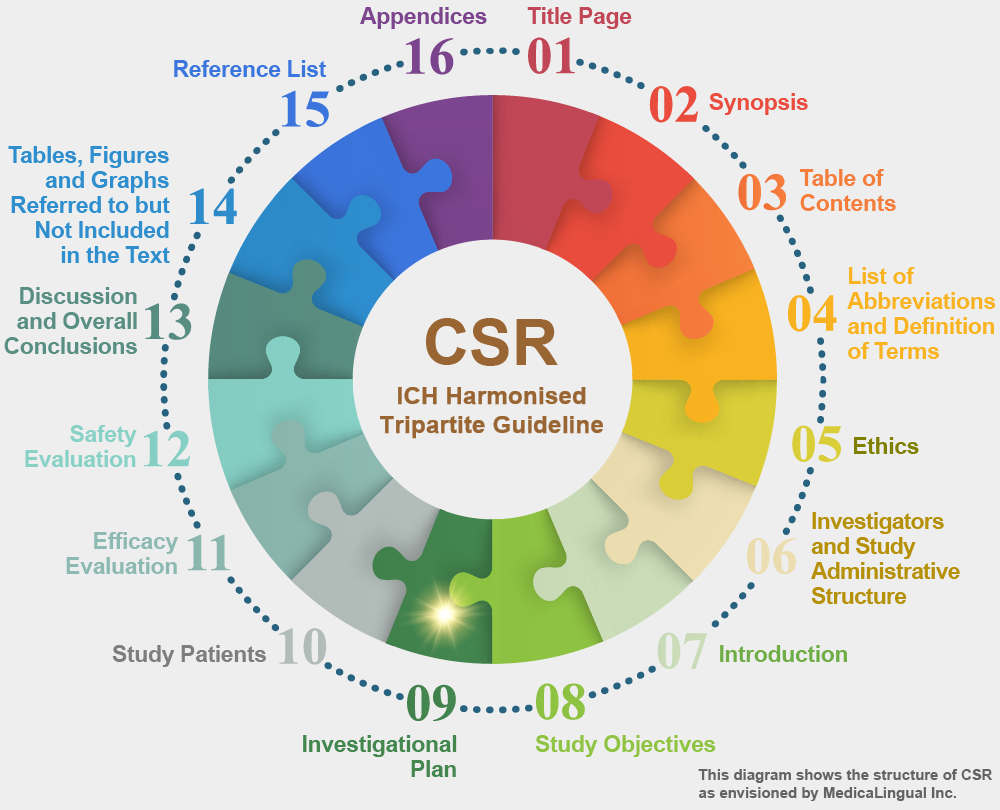
治験の統括報告書の構成と内容に関するガイドライン
平成8年5月1日 薬審第335号
各都道府県衛生主管部(局)長あて 厚生省薬務局審査課長通知
STRUCTURE AND CONTENT OF CLINICAL STUDY REPORTS
Recommended for Adoption at Step 4 of the ICH Process on 30 November 1995 by the ICH Steering Committee
9. 治験の計画
9.2 対照群の選択を含む治験デザインについての考察
選択された特定の対照や用いた治験デザインについて,必要に応じ考察すること。考察する価値のあるデザイン上の論点の例を以下に示す。
9. INVESTIGATIONAL PLAN
9.2 DISCUSSION OF STUDY DESIGN, INCLUDING THE CHOICE OF CONTROL GROUPS
The specific control chosen and the study design used should be discussed, as necessary. Examples of design issues meriting discussion follow.
一般に知られている対照(比較)群は,プラセボ同時対照,無治療同時対照,実薬同時対照,用量比較同時対照,既存対照である。対照の取り方以外に考察を必要とする重要なデザイン上の特徴は,クロスオーバー法の使用や,特定の薬剤又はある薬効群の薬剤に反応する・しないといった特殊な既往を有する患者の選択である。無作為化を用いなかった場合には,系統的な選択の偏りを防ぐためにどのように他の方法を用いたのか(もし用いたなら)を説明することが重要である。
Generally, the control (comparison) groups that are recognised are placebo concurrent control, no treatment concurrent control, active treatment concurrent control, dose comparison concurrent control, and historical control. In addition to the type of control, other critical design features that may need discussion are use of a cross-over design and selection of patients with particular prior history, such as response or non-response to a specific drug or member of a drug class. If randomisation was not used, it is important to explain how other techniques, if any, guarded against systematic selection bias.
採用した治験デザインや対照群に関して知られているか提起される可能性のある問題点については,治験対象となる特定の疾患や治療法に照らして考察すること。例えばクロスオーバー法については,とりわけ治験中に疾患が自然変動する可能性及び治療の持越し効果の可能性を考慮すること。
Known or potential problems associated with the study design or control group chosen, should be discussed in light of the specific disease and therapies being studied. For a crossover design, for example, there should be consideration, among other things, of the likelihood of spontaneous change in the disease and of carry-over effects of treatment during the study.
同等性を示すこと,つまり確立した治療との比較において,新しい治療がある一定の値以上は劣らないことを示すことにより有効性を検証しようとしたのであれば,そのような治験デザインに関する問題点を述べること。特に,その治験で有効な治療を無効な治療と区別でき得るとみなす根拠を述べること。
If efficacy was to be demonstrated by showing equivalence, i.e., the absence of a specified degree of inferiority of the new treatment compared to an established treatment, problems associated with such study designs should be addressed. Specifically there should be provided a basis for considering the study capable of distinguishing active from inactive therapy.
デザイン上の重要な特徴(患者の選択,治験のエンドポイント,期間,実対照薬の用量,併用療法など)が当該治験に類似しており,当該実対照薬がプラセボより優れているという結果を一貫して示す過去の試験成績を分析することで,裏付けが得られることもあろう。当該治験が,有効な治療と無効な治療とを区別する能力を持つことをどのように示せるのかについても考察すること。例えば,治療集団と無治療群を明確に区別する治療上の反応の大きさを(過去の試験成績に基づき)定めることができるかもしれない。このような反応は,基準値からの測定値の変化,又は治癒率若しくは生存率のような特定の転帰である場合もある。このような反応が達成されたならば,当該治験が活性を有しない薬剤と活性を有する薬剤とを識別し得たとの期待が支持されよう。その治験で,治療法が一定以上に劣らないことを示そうとした治療効果の差(しばしばデルタ値と言われる)についても考察すること。
Support may be provided by an analysis of previous studies similar to the present study with respect to important design characteristics (patient selection, study endpoints, duration, dose of active control, concomitant therapy etc.) showing a consistent ability to demonstrate superiority of the active control to placebo. How to assess the ability of the present study to distinguish effective from ineffective therapy should also be discussed. For example, it may be possible to identify a treatment response (based on past studies) that would clearly distinguish between the treated population and an untreated group. Such a response could be the change of a measure from baseline or some other specified outcome like healing rate or survival rate. Attainment of such a response would support the expectation that the study could have distinguished the active drug from an inactive drug. There should also be a discussion of the degree of inferiority of the therapy (often referred to as the delta value) the study was intended to show was not exceeded.
既存対照の限界はよく知られており(治療群の比較可能性の保証の困難さ,治療法に関して治験責任医師等に盲検化ができないこと,治療法や疾患の変化,プラセボ効果による差など),特別な注意が必要である。
The limitations of historical controls are well known (difficulty of assuring comparability of treated groups, inability to blind investigators to treatment, change in therapy/disease, difference due to placebo effect etc.) and deserve particular attention.
ウォッシュアウト期間の有無及び治療期間の長さを含む,デザインのその他の特徴についても考察する価値があろう。特に慢性疾患の場合にはその価値がある。もし,用量及び投与間隔を選択した理由が明白でないならば,それを合理的に説明すること。例えば,消失半減期の短い薬剤であって,作用が血中濃度の時間的推移に密接に関係している場合は,通常その薬剤を1日1回投与することでは有効性は示されない。もし,治験デザインがそういった投与法を用いているのであれば,例えば,血中濃度に比較して作用が持続するという薬力学的証拠を示すことによって説明すること。次の投与の直前には薬剤の作用が「消失している」という証拠を探索するために用いた手順,例えば投与直前の作用の測定のような手順を記述すること。同様に,並行デザインによる用量-反応試験においては,それらの用量が選択された理由を説明すること。
Other specific features of the design may also deserve discussion, including presence or absence of washout periods and the duration of the treatment period, especially for a chronic illness. The rationale for dose and dose-interval selection should be explained, if it is not obvious. For example, once daily dosing with a short half-life drug whose effect is closely related in time to blood level is not usually effective; if the study design uses such dosing, this should be explained, e.g., by pointing to pharmacodynamic evidence that effect is prolonged compared to blood levels. The procedures used to seek evidence of “escape” from drug effect at the end of the dose-interval, such as measurements of effect just prior to dosing, should be described. Similarly, in a parallel design dose-response study, the choice of doses should be explained.










